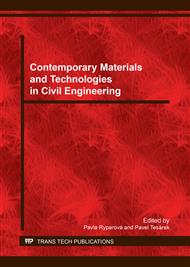[1]
K.E. Healy, Dentin and enamel, in: J. Black, G. Hastings (Eds. ), Handbook of Biomaterial Properties, Springer Science+Business Media, 1998, p.24 – 39.
Google Scholar
[2]
M. Goldberg, A.B. Kulkarni, M. Young, A. Boskey, Dentin: Structure, Composition and Mineralization, Front Biosci (Elite Ed. ) 3 (2011) 711-735.
Google Scholar
[3]
R. Schilke, J.A. Lisson, O. Bauß, W. Geurtsen, Comparison of the number and diameter of dentinal tubules in human and bovine dentine by scanning electron microscopic investigation, Archives of Oral Biology 45 (2000) 355-361.
DOI: 10.1016/s0003-9969(00)00006-6
Google Scholar
[4]
T.L. Lenzi, C. de A.B. Guglielmi, V.E. Arana-Chavez, D.P. Raggio, Tubule density and diameter in coronal dentin from primary and permanent human teeth, Microscopy and Microanalysis 19 (2013) 1445-1449.
DOI: 10.1017/s1431927613012725
Google Scholar
[5]
R.G. Craig, F.A. Peyton, Elastic and mechanical properties of human dentin, Journal of dental research 37 (1958) 710-718.
DOI: 10.1177/00220345580370041801
Google Scholar
[6]
J.H. Kinney, M. Balooch, S.J. Marshall, G.W. Marshall JR, T.P. Weihs, Hardness and Young´s modulus of human peritubular and intertubular dentine, Archives of Oral Biology 41 (1996) 9-13.
DOI: 10.1016/0003-9969(95)00109-3
Google Scholar
[7]
N. Meredith, M. Sherriff, D.J. Setchell, S.A.V. Swanson, Measurements of the microhardness and Young´s modulus of human enamel and dentine using an indentation technique, Archives of Oral Biology 41 (1996) 539-545.
DOI: 10.1016/0003-9969(96)00020-9
Google Scholar
[8]
G. Balooch, G.W. Marshall, S.J. Marshall, O.L. Warren, S.A.S. Asif, M. Balooch, Evaluation of a new modulus mapping technique to investigate microstructural features of human teeth, Journal of Biomechanics 37 (2004) 1223-1232.
DOI: 10.1016/j.jbiomech.2003.12.012
Google Scholar
[9]
J.H. Kinney, S.J. Marshall, G.W. Marshall, The Mechanical properties of human dentin: A Critical review and re-evaluation of the dental literature, Critical Reviews in Oral Biology and Medicine 14 (2003) 13-29.
Google Scholar
[10]
D. Ziskind, M. Hasday, S.R. Cohen, H.D. Wagner, Young´s modulus of peritubular and intertubular human dentin by nano-indentation tests, Journal of Structural Biology 174 (2011) 23-30.
DOI: 10.1016/j.jsb.2010.09.010
Google Scholar
[11]
A. Jíra, J. Němeček, Nanoindentation of human tooth dentin, Key Engineering Materials 606 (2014) 133-136.
DOI: 10.4028/www.scientific.net/kem.606.133
Google Scholar
[12]
J. H. Kinney, M. Balooch, G.W. Marshall, S.J. Marshall, A Micromechanics model of the elastic properties of human dentin, Archives of Oral Biology 44 (1999) 813-822.
DOI: 10.1016/s0003-9969(99)00080-1
Google Scholar
[13]
W.C. Oliver, G.M. Pharr, Measurement of hardness and elastic modulus by instrumented indentation: Advances in understanding and refinements to methodology, Journal of Materials Research 19 (2004) 3-20.
DOI: 10.1557/jmr.2004.19.1.3
Google Scholar


